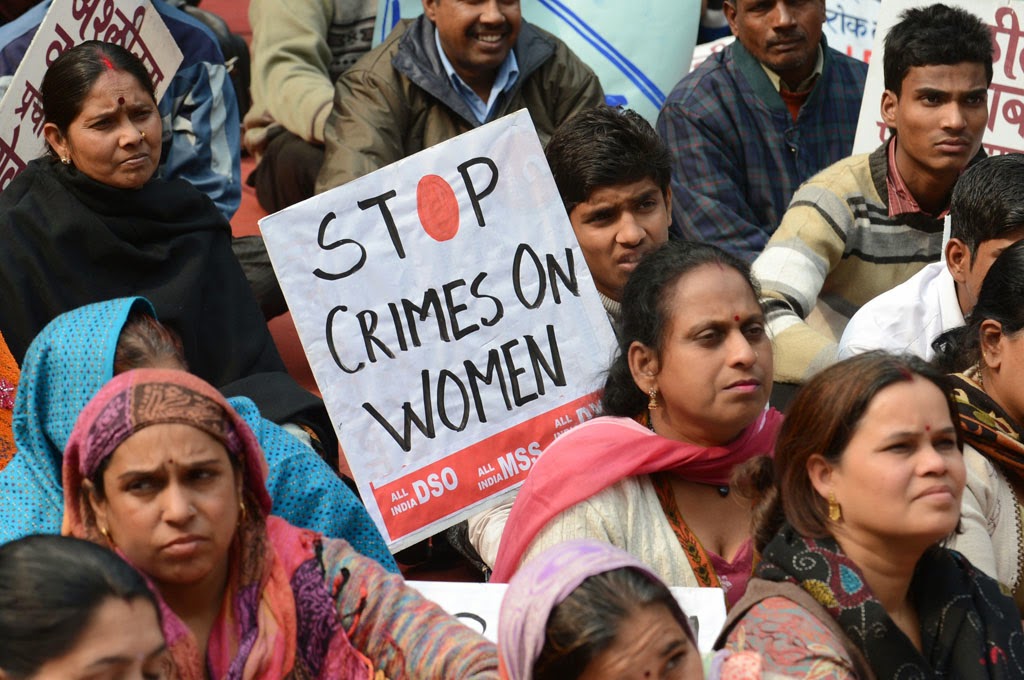Gender Violence: India The Worst
June 27, 2018 | Expert Insights

A poll that surveyed 550 global gender experts has named India as the most dangerous country for women in the world. Afghanistan ranked second, Syria third, Somalia fourth, and Saudi Arabia fifth.
The United Nations estimates that one in three women across the world experience some form of physical or sexual violence.
Background
The United Nations defines violence against women as "any act of gender-based violence that results in, or is likely to result in, physical, sexual, or mental harm or suffering to women, including threats of such acts, coercion or arbitrary deprivation of liberty, whether occurring in public or in private life." Agencies such as the EIGE (European Institute for Gender Equality) note that it “important to retain the 'gender-based' aspect of the concept as this highlights the fact that violence against women is an expression of power inequalities between women and men.”
There has been some progress, including laws against domestic violence and rape in a majority of countries across the world. However, violence against women continues to be one of the most prevalent human rights issues. A 2013 study by the WHO that used data from over 80 countries found that 35% women worldwide have experienced physical or sexual violence by a partner, or sexual violence by a non-partner at some point in their lives. Sexual violence includes “any sexual act, attempt to obtain a sexual act, or other act directed against a person’s sexuality using coercion, by any person regardless of their relationship to the victim, in any setting.”
Studies estimate that approximately half of all women killed in homicide cases in 2012 were killed by intimate partners of family members. In the case of men, this number was less than 6%. Women and girls account for 71 per cent of all human trafficking victims detected globally. In India, at least 34,651 cases of rape were reported in 2015, according to statistics released by the National Crime Records Bureau (NCRB).
According to the World Economic Forum’s Global Gender Gap Report, the gap between the achievements and well-being of men and women widened in 2017. The report ranks countries according to calculated gender gap between women and men in four key areas: health, education, economy and politics. The report stated, “A decade of slow but steady progress on improving parity between the sexes came to a halt in 2017, with the global gender gap widening for the first time since the WEF’s Global Gender Gap Report was first published in 2006.”
Analysis
A poll conducted by the Tomson Reuters Foundation has ranked India as the most dangerous country for women. The poll, which surveyed 550 experts, addressed “the overall risks faced by women… specifically regarding healthcare, access to economic resources, customary practices, sexual violence, non-sexual violence and human trafficking.”
"The world's second most populous nation, with 1.3 billion people, ranked as the most dangerous on three of the topic questions - the risk of sexual violence and harassment against women, the danger women face from cultural, tribal and traditional practices, and the country where women are most in danger of human trafficking including forced labour, sex slavery and domestic servitude," the report said. India has gone up on the list from number 4 in 2011, overtaking Pakistan, DRC, and Afghanistan.
The report referenced the horrific 2012 gang rape and murder of student Jyoti Singh in New Delhi. Public outrage has grown since the “Nirbhaya” incident, and citizens recently took to the streets again this April, after the rape and murder of an eight year old girl. Read more on this issue here. According to state data, gender-specific crime in India grew by 80% from 2007-2016. While some attribute this to an increase in reports of crimes, a 2017 survey by the National Bar Association estimated that 70% sexual harassment victims do not report the incidents. Nishtha Satyam, deputy chief of U.N. Women in India stated that this “culture of silence” could be due to a “fear of backlash”.
Key problems in Afghanistan and Syria, which came in second and third respectively, included non-sexual violence, access to healthcare, and economic resources. Lack of healthcare and economic access were also major issues in Somalia (4th), and Yemen (8th). In Somalia, Yemen, Saudi Arabia (5th), and Pakistan (6th), the report cited harmful cultural and traditional practices as major detriments to women’s welfare. In Saudi, “discrimination, including in the workplace and in terms of property” was an issue as well. Sexual violence and lack of economic resources were primary issues in the Democratic Republic of Congo (7th). The report noted that Nigeria (9th) was the fourth most dangerous country (alongside Russia) in human trafficking.
The United States was the only Western nation in the top ten, due to “risks women face in terms of sexual violence, including rape, sexual harassment, coercion into sex and a lack of access to justice in rape cases.” The report cited the #MeToo campaign, in which hundreds of thousands of women shared their experiences of sexual harassment or violence. Cindy Southworth, executive vice president at the National Network to End Domestic Violence, commented that US’ place on the list may have been due to media coverage of the movement. Some observers pointed out that the ratings are based on informed opinion. A number of countries with prevalent femicide and no laws on domestic violence did not top the list.
Assessment
Our assessment is that India has made some progress in arenas such as women’s education and health. However, we believe that this progress is undermined by the prevalence of gendered violence. We feel that both the state and citizens must address the systemic violence and injustices faced by women today. It is essential to address these issues in order to allow women equal opportunities, access, and safety in public and private spheres of life.








Comments